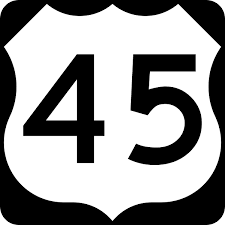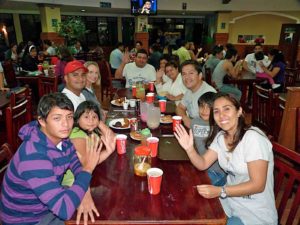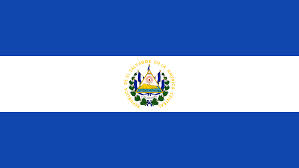
EL SALVADOR
.
.
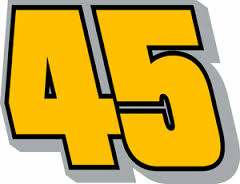
Trackchasing Country #45
Greetings from places on the way to and from Queazltepeque, El Salvador. Click on the links below to read about the “story” and see the photos and videos from this most fun trip to the friendly country of El Salvador, trackchasing country #45.
OVERVIEW

Taking my trackchasing hobby to foreign countries creates the very best experiences. On this very trip I moved into the #1 trackchasing position when it came to see racing outside of the United States. Yes, this was just one of more than 2,000 trips that have taken me up, down and around the long and dusty trackchasing trail. However, it was my first opportunity to see racing in a place like El Salvador. Every one of my foreign country visits is extra special. This trip was no different. It was the friendly family oriented style of the folks we met that made El Salvador a special treat.
If you would like to see where I’ve been and experience those adventures here’s the link:

If you’ve got a question, comment or whatever please leave it at the bottom of this report. It’s very easy to do. Or you can visit me on Facebook. Thanks!

“ONE GREAT INTERNATIONAL TRACKCHASING WEEKEND” THE TOURING
Greetings from the United States
Editor’s note
Everything written in the “Advance Preparation” section of this Trackchaser Report was reported before I ever landed in El Salvador. In order for a trip like this to be successful a good deal of advance preparation must be done. That planning takes place at the world headquarters of RLR – Randy Lewis Racing in San Clemente, California. However, to be honest I really didn’t put that much effort into this trip.
Trackchasing in El Salvador would be a historic day for the hobby of trackchasing. El Salvador would be my 45th trackchasing country. This moves me into the lead in this challenging, interesting and absolutely fun category. Of course, I had help from “locals” in making this trip possible.
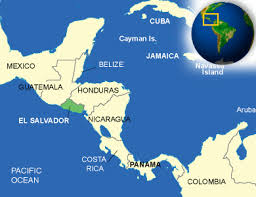
Also if you’d like to learn a little more about El Salvador the country check out the “background” information I prepared for you. It appears at the bottom of this report. I have condensed this section so you can get a good “feel” for this Central American country.
TODAY’S HEADLINES
What three things have allowed me to see racing in 45 countries?. …………..details in “Advance preparation”.
You might not have known what the official currency of El Salvador is…………….more in “Currency”.
This was the most family-oriented international trackchasing trip we have ever taken …………..details in “Day 4 – Saturday”.
Pedro and this friends introduced us to the most unique and delicious food …………..details in “Day 4 – Saturday”.
ADVANCE PREPARATION
There is a new international trackchasing leader.
Coming into this trip, I have trackchased in 44 countries. I was tied for first place in this unique trackchasing category with Belgium’s Roland Vanden Eynde. It was Roland himself who had encouraged me to expand my trackchasing adventures beyond the United States. Back in 2005 Roland invited Carol to come trackchasing with him in Europe. During that trip I added countries 5-9, including the Netherlands, Belgium, France and Germany.

I remember Roland telling me it wouldn’t be so difficult to go all over the world seeing racing in different countries. At the time “I couldn’t see the forest for the trees on that one”. I didn’t think there was any way I could add many new trackchasing countries to my single digit list.
However, I often found it is the individual himself who is responsible for his/her individual achievement limits. I’ve seen many people blame “the other guy” for their lack of results. I always smile silently to myself on that one. In reality it is the individual himself who “limits” what can or can’t be done simply by the “attitude they bring to each party”.
Of course, I had had tons of help beyond the initial efforts provided by Roland in this area. I can think of three major happenings that helped me see racing in 36 countries in the past 35 months.

- Airline sponsorships
Our son J.J. became a commercial airline pilot in August, 2006. Since that time we’ve been able to fly all over the United States and the world on almost a moment’s notice. You all know that I can’t match up with the big East coast trackchasing teams when it comes to spending money.
However, I’m not a pauper either. Truth be told I never thought it was a good value to spend the kind of money it takes to trackchase internationally. Frankly, I still don’t. However, with an “airline sponsorship” it brings the cost back to something I can justify financially.
I am always amazed at the things “I don’t know that I don’t know”. When J.J. first pursued his interest in flying in his early 20s, I funded his flying lessons. As I recall that ran me about “10 large ones” to use some Tony Soprano vernacular. However, Carol always says that “what you give comes back tenfold”. That was certainly true in this case.
I wasn’t that wild about his flying idea. First, I thought it was too dangerous to do in small private planes. I still feel that way about those planes. I also thought it was too expensive. It WAS expensive.
Then J.J. went off to pursue his way in the business world with not much activity with flying. I didn’t mind that a bit. However, some 8-10 years later after earning his MBA at UCLA he decided to change careers. He then spent a good deal of HIS money to get the training necessary to fly commercial jets.
I remember when he was pursuing his first commercial airline job. He was telling me how “as parents” Carol and I were going to be able to fly whenever we wanted too at very little cost. He went on to explain that our flying benefits would be on a “standby” basis. I had flown all my life (pretty much every week for 30 years) near the front of the plane. I always boarded the plane first, was able to check bags and had somebody else paying for the ticket. I wasn’t terribly enthused about flying “standby”. You see, I didn’t know what I didn’t know!
We will be celebrating J.J.’s fourth anniversary with his airline by flying to San Salvador, El Salvador. Would you believe that Carol and I have flown almost 700 flights covering more than 900,000 miles during his four years. Amazing.
Now that I’ve been doing this for the past four years, I wouldn’t trade it for the “old world”. Being able to be flexible around departures in this best thing going. Yes, I do spend hours planning our routes. However, I find that the most fun. I’ve been to nearly 50 countries in total doing this. This weekend Carol will see her 25th trackchasing country. The “airline sponsorship” thing has been the absolute driving force behind my international trackchasing effort.

- GPS
Believe it or not, being able to use GPS has been a huge factor in traveling the world. You may or may not think the street signs in your town are very good. However, street signs are almost non-existent in most of the countries I’ve been too. Where they do appear, they are very difficult to understand.
I’ve probably been able to use GPS in half the countries where I’ve trackchased. In the other half, I’ve had drivers. Therefore, I’ve been able to navigate my way without getting lost all that much compared to not having the aid of GPS.
To be clear, I don’t really mind being lost on my international travels. It’s amazing the new experiences that have come my way when I’ve been “lost”. However being lost when you absolutely have to be at the track or at an airport is a major bummer. Using GPS makes my trips in the U.S. and abroad so much more enjoyable. It’s difficult to fully express the benefits this simple inexpensive machine provides.
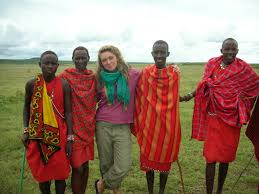
- Local contacts
I have been blessed with having the very best “local contacts” that anyone worldwide traveler could ever have. I would say Roland got us started. Sometimes I feel Roland is hurt because I haven’t asked him for much advice since I saw trackchasing country #9. If he feels that way he shouldn’t. It would be easy to go to him for travel information especially for Europe where he has seen 33 of his 44 total trackchasing countries. However, that would be “too easy”. Some might consider that I am “competing” with Roland to see who can trackchase in the most countries. Regardless, of your position on that, I didn’t and don’t want to rely on any one person for support with my international trackchasing.
I will tell you this. I have met some mighty fine people just “nosing about the world”. In most cases, I met them on the internet first. Then I was lucky enough to meet them in person. I won’t mention them by name for fear of missing an important person or two.
I’ve been given special privileges and access at so many of the international tracks I’ve visited. I’ve been given unusual one of a kind gifts that I will treasure forever. One of the very best things is being able to share a meal with my international friends. I’ve been invited into the homes of several of my international trackchasing friends. How many Americans can say they’ve been in the home of anyone who lives outside the U.S. How many people have been treated to a meal in that circumstance. I can’t imagine many people have had those experiences.
I simply cannot thank those “international friends” who have helped me. If I were still working in business, I would hire each and every one of you! As it is all I can say is a big “Thank You” and offer you the same support you gave me if you ever visit the United States. You will always have a roof and some good food (cooked by “Trackchasing’s First Mother” of course), if you come anywhere our sleepy little seaside village of San Clemente. Thank you!
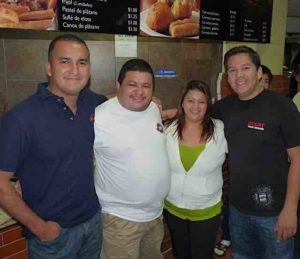
Secret international agents rule!
My tradition of making good contacts in my next trackchasing country continued with El Salvador. Mr. Pedro Velado (far right above) came into my world. I wasn’t looking to trackchase in his country. However, out of the blue Pedro contacted me.
He had seen a message I had left several months ago at a site called www.motormavens.com. I had put out a message to folks telling them about my hobby. Pedro saw my note and invited me to come to El Salvador for trackchasing.
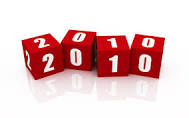
Pedro gave me some background information about the races in El Salvador. He also gave me their 2010 racing schedule. Initially, I picked a date in November of this year. There were other summer and international race dates but they seemed to conflict with my domestic trackchasing schedule.
However, I soon reminded myself that I live closer to San Salvador, El Salvador than I do to New York City! I could go trackchasing on Thursday and Friday of this week “in the states” and still seeing El Salvadorian racing on Sunday. Yes, the world is getting smaller and smaller. I’ll tell you much more about Pedro and his friends in my next report.
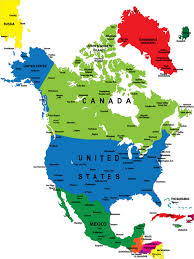
One more North American continent country added.
El Salvador would be my 9th North American continent trackchasing country. Even though El Salvador is in Central America, Central America is on the North American continent! With the addition of El Salvador my North American continent list looks like this:
Barbados
Canada
Costa Rica
Dominican Republic
El Salvador
Guatemala
Jamaica
Mexico
United States
THE RACE
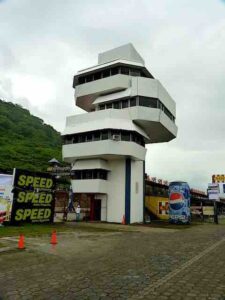
There must be a race.
It looks as if the Autodromo El Jabali track races about six times each year. During the year we have several weekend conflicts with our UCLA football season tickets (6 weekends), our Hawaiian time-share visits (four weekends) as well as miscellaneous graduations, weddings and family get togethers. I’m guessing I have more “fixed date” conflicts than any other leading trackchaser.
Therefore, I “plugged” in the El Salvador racing dates and the weekend of August 21-23 came up the winner. We would try to trackchase in New York and South Carolina leading up to our trip “down south”. Then if everything “worked out” we would be sitting in our season ticket Los Angeles Angels of Anaheim seats less than 24 hours after returning from El Salvador. We lead a busy life, but it’s fun.

THE VISA
Just your passport, please.
That’s right. All I needed to do was show up with a valid U.S. passport and getting into El Salvador would be easy. No visa required.
THE TRANSPORTATION
New York to South Carolina to El Salvador? Makes sense to me.
To some this might seem like an unusual trip. To us, it was merely routine. The plan called for us to first fly to Buffalo, New York for a race. Then we would fly to Atlanta for a race in South Carolina. Next up would be El Salvador.
Rarely do I tie in domestic (U.S. based) tracks with a foreign track visit. However, I didn’t want just “one” country wiping out my entire trackchasing weekend. That’s why I scheduled races in New York and South Carolina on Thursday and Friday respectively.
However, even the best-laid plans don’t always work out. We ended up in Orlando, Florida rather than Buffalo, New York. In August I would rather be in Buffalo! However, the rest of the trip worked and we made our flight, in business class, no less to San Salvador, El Salvador.
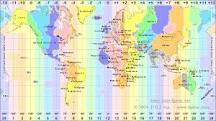
TIME ZONES
What time is it?
Last week it took me a long time to figure out that Guatemala was on Central STANDARD time. That’s why they were only one hour’s time difference from Pacific Daylight Savings time. El Salvador would be the same time as Guatemala. We were actually “gaining” an hour flying from Atlanta.
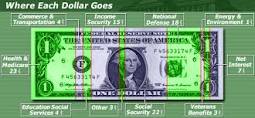
CURRENCY
What do you mean you take dollars!
In just about every country I have traveled too (maybe all of them!) I have to convert U.S. dollars into some foreign currency. We’ve probably got a thousand dollars lying around the house in various foreign currencies. Would we be adding more “El Salvadorian money” to our foreign stash that in many cases would never be used.
No!! Can you believe that the OFFICIAL currency of El Salvador is the U.S. dollar! I can’t either. How many countries use OUR dollar as THEIR currency? Right off the bat, I can’t think of any.
WEATHER
I don’t care if it rains.
My Apple iPhone weather “app” tells me the rain probability for this part of El Salvador would be about 50% or more every day for the next ten days. Unlike the pansies who administrate and compete in American racing, wet weather does not deter foreign (to me) racers. They don’t cancel for rain. It is with this in mind that I venture into what is expected to be rain everyday. As long as they don’t cancel the race, I don’t care for a little bit of precipitation.
OVERNIGHT ACCOMMODATIONS
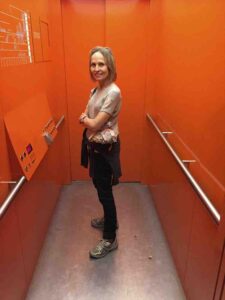
“She” is on this trip.
“Trackchasing’s First Mother” is on this trip. I don’t mind staying in a Motel 6 if I have too. However, when “she” comes along I feel the need to upgrade our lodging. In Orlando we stayed at the Marriott. In Atlanta we stayed at the Westin. In El Salvador we would be staying at the Sheridan Presidente Hotel. This is the least I can do for “paying back” a person who makes me a hot “cooked to order” breakfast every day that I’m home. Of course, I can never truly compensate her but I continue to make “installment” payments.
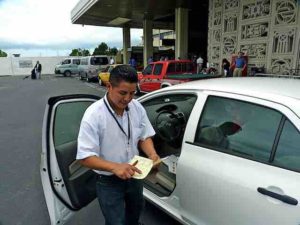
THE RENTAL CAR
I always like to have my own rental car on these trips. A car gives us so much flexibility. When I can I love to get out amongst the people and see how they live their daily lives.
When we land in El Salvador, Pedro will meet us at the airport. He will then direct us to our hotel. Pedro volunteered for this duty. That was very gracious of him. We’re only in El Salvador for 48 hours, unless we don’t get on a very full flight back to Atlanta. Hopefully, we’ll have the time to explore a little bit.
NAVIGATION
Garth has already helped us out on this trip around Georgia and South Carolina. Since he doesn’t speak Spanish we’ll give him a break once we reach El Salvador. If it’s available I’ll rent a GPS unit upon arriving at the Comalapa International Airport.
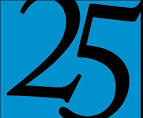
THE TRAVELING COMPANION
As you might have guessed by now, “Trackchasing’s First Mother” aka as wife Carol is coming on this trip. This will be her 25th trackchasing country. No other trackchasing wife has as many as ten! Carol and I have traveled together (both trackchasing and non-trackchasing) to nearly 50 countries. We always have fun and this trip should be no exception.
THE SUMMARY
During the first eight months of 2010 my travel schedule has been daunting. I’ve made trips to Malta, Canada, Finland, Japan, Chile, Morocco, Brazil, Estonia, Latvia and Guatemala. Now I can add El Salvador to the list. That’s a pretty eclectic group of countries. Additionally, I’ve see racing in 25 different U.S. states. Mind you, I’m “cutting back” this year!
Of course this trip is MORE than special. I will be trackchasing in my 45th lifetime country. No one has ever trackchased in more. Five years ago, I never would have imagined this.
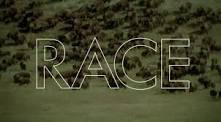
I made this remark when I was challenging trackchaser commissioner, Will White, in our “race to 30” international countries contest” just a few months ago. I said that no matter who got to 30 countries first, for sure both of us would have fun doing it. I call tell you this. I have had an absolute blast seeing racing in 45 different countries. All you have to do is look at the tab “Foreign Countries Visited” on my website at www.randylewis.org to prove that point. We’ve been almost everywhere and seen almost everything.
However, there are still MORE countries to see. I plan on seeing them. I can’t tell you when (for security reasons) or where (again, for security reasons) but I will be adding new countries to my trackchasing list.
The Trip
Editor’s note: Remember this trip started last Thursday when we ended up in Orlando, Florida even though we were headed to Buffalo, New York. The next night we trackchased in Greenville, South Carolina. On Saturday morning we headed to El Salvador. Therefore, El Salvador would be days 4-6 of this unusual trip.
Day 4 – Saturday
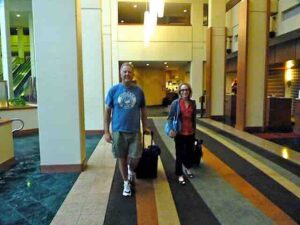
It was a simple plane ride to El Salvador.
Atlanta is an excellent “international gateway” city to both Central and South America. El Salvador is only a three-hour plane ride from the “Peach City”. It’s nice that, during the “Daylight Savings Time” period of the year El Salvador is only one hour “off” of California time.
Our plane ride was uneventful. We were served a delicious meal in business class. The flight back home looks much tighter. We may be in El Salvador until the snow flies if we can’t get on a plane.
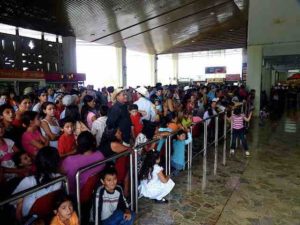
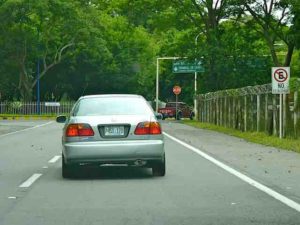
The Comalapa International Airport, some 30 minutes outside of El Salvador is small and modern enough. Clearing customs was a snap although there was a $10 U.S. per person “tourist tax”. They only accept cash. Since the official currency of El Salvador is the U.S. dollar a twenty-dollar bill covered this expense.
Was the insurance really mandatory?
Next up we picked up our rental car. I was renting from Hertz. For the first time in the past several trips the company I rented from had an office at the airport. That was a good thing. However, don’t mistake an El Salvador Hertz location with one you might have used in the U.S.
There was virtually no English spoken by the two Hertz employees working the counter. Nevertheless, they were able to get the point across that I HAD to pay $24/day U.S. for “mandatory” auto insurance. That sounded a little high. However, I am trained to tell when people are lying and I think they were telling the truth about the insurance.
We also rented a Garmin GPS unit for two days at $11 U.S. per day. I wasn’t sure how much we would be driving. Regardless, if it only saves us one time then it’s worth 22 dollars.
Enter Mr. Pedro Velado.
My El Salvadorian contact, Mr. Pedro Velado had promised to be waiting for us when we arrived. He was. In many of the Latin American airports visitors must wait outside for arriving guests. That was the case today. When we left the airport building there must have been 200 people waiting outside. However, it was not difficult to spot Pedro.
Pedro and I had communicated several times via email. He had insisted upon coming to the airport to help guide us to our hotel in San Salvador. His behavior is similar to so many other international friends who have gone out of their way to make sure we were comfortable and enjoyed our visit to their country. It surprises me that we have any wars at all. All of the people I’ve met in foreign (to me) countries have been easier to get along with than some of my California neighbors or, heaven forbid, those “Dreaded East Coast Trackchasers”.
Pedro speaks English well. Today he brought along his beautiful wife Sophia and their eight-year-old son Juan Pablo. I confirmed that Juan-Pablo is NOT named after current NASCAR driver and Colombian born Juan-Pablo Montoya!

The plan was for us to follow Pedro and his family in our rental car to the Sheraton Presidente Hotel. Of course, you can tell Carol is along on this trip with the regal sounding name of our lodging location.
The drive was somewhat uneventful in the early stages. The road was good and there wasn’t much traffic. Our rental car is a Toyota Yaris. Compared to last week’s rental in Guatemala this is a Rolls-Royce. Each time I rented the most basic car to get the lowest price. You just never know for sure how it’s going to turn out. Today’s car has air-conditioning and power steering, two things that were sorely lacking just seven days ago.
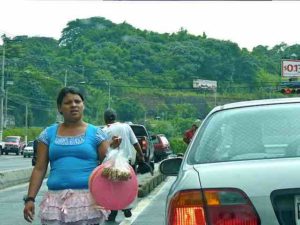
During the last mile or two of our drive, traffic picked up. We had a couple of red lights where “vendors” attempted to sell stopped motorists their wares. I even saw one fellow “juggling for dollars”. At least the beggars here have perfected a skill. In the states the only creativity they show is how many “buzz” words they can fit on a cardboard sign. The best efforts always include “veteran” “sick” “broke” and/or “will work for food”. I’ll bet in many cases none of these descriptors are truthful.
There are a large amount of traffic circles in San Salvador. These are commonly called “roundabouts”. I love roundabouts. You don’t have to stop. However, today a few drivers pulled “Chevy Chase – Vacation” moves. Their wild lane-changing made me more pleased that I had purchased the mandatory automobile insurance!

We picked the right hotel.
Our hotel looks a bit dated on the outside. However, on the inside it’s very upscale. A plague shows that George W. Bush, former president of the U.S. was one of the dignitaries to stay here. Upon arrival we parked our car, checked in and went up to store our luggage in room #356.
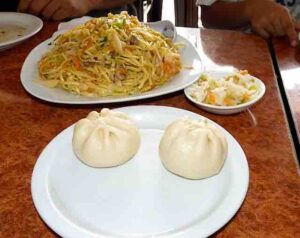
Uncle Yang’s rocks.
While we did all this, the Velados waited on us to return. We would all go in Pedro’s car to their favorite local restaurant. This place serves Taiwanese food. It’s called “Uncle Yang’s”. We dined on several delicacies using chopsticks. I’m always telling my 46-year old brother that he needs to learn to use chopsticks. Not only will he never starve in Asia it just might put him “over the top” with the next young lady he meets.
Meet the Velado’s.
Let me tell you about the Velados. Pedro is a graphic artist. His working hours are somewhat unusual compared to what you might see in the United States. He works Monday-Friday from 8-12 p.m. and then comes back to complete his day from 2-6 p.m. Since he lives close to home he can come home and join his wife for lunch.
I’m guessing Pedro is in his early 30s. He speaks English well as a result of attending an “American” school. He drives a Honda Civic. I was surprised to learn that he and his family have visited the United States more than once. Three of his siblings live in California! A sister is an architect, a brother works for CalTrans and another brother owns his own home construction business.

Pedro, Sophia and Juan-Pablo have done all the “California tourist” things that we’ve done seemingly a million times. This includes Disney, Knott’s Berry Farm and Legoland! Of course, Pedro is a huge fan of In n’ Out burgers and tries to go there at least three times during each U.S. visit.
During our time together I asked Pedro what he liked about the U.S. He told me he much preferred two things. First, he liked how Americans drove! Secondly, he told me he felt safe everywhere he went. I found those interesting observations.

Sophia is a beautiful young women. She doesn’t speak much English but I think she understands it well. Sometimes I think international people I meet are “afraid” to display their English speaking skills. They really shouldn’t be fearful. Whatever their English-speaking capabilities are they’re nearly 100% better than I can speak their language.
Sophia works a similar schedule to Pedro’s. We can tell she is a very protective and responsible mother as her young son is very well behaved. Like most wives she is available to help “correct and protect” her husband if needed. I think this is an inherent asset that wives bring to the “family table”.
Juan-Pablo will start the third grade this coming Monday. He studies English is his school. He’s somewhat shy and very smart. J-P also knows how to use chopsticks! I wonder how many trackchasers can make that claim?
We enjoyed a nice lunch and talked, in English and occasionally broken Spanish (ours) throughout our meal. One of the best ways to get to know people is to break bread with them. Following lunch Pedro drove us around the immediate area and then back to the hotel. We would have five hours too ourselves before we would meet up again for Pupusas! This is an El Salvadorian food treat. Check out the “Fast Facts” section for more info.
Shotguns are us.
The visual evidence of strong police and security protection is everywhere. This afternoon’s restaurant was in a strip center shopping mall. In order to get into the restaurant’s parking lot, an armed guard (shotgun) had to remove a chain before we could drive in.
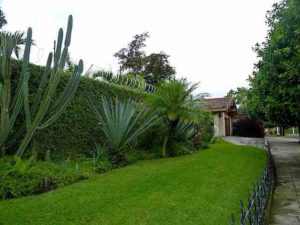
From the hotel Carol and I took a walk through a nearby residential neighborhood. This seemed to be a collection of upscale homes. What was most noticeable was the concertina wire and heavy-duty steel garage doors.
I’m not trying to over emphasize the security situation but EVERY house has a single or double roll on this specialized barbed wire around their 10-15 foot concrete exterior walls. EVERY house had a huge steel garage door that they probably bought from the U.S. Embassy. Mind you, this was in an upscale neighborhood. Pedro had warned us about seeing this ever present security in place.
I’ve been traveling to a large number of Central and South American countries during the past several months. I’ve seen this security presence in most of the countries I’ve visited. I never see any crimes taking place and really don’t feel unsafe. However, I suspect they have this protection in place for a reason.
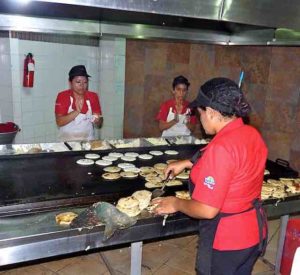
I can eat ethnic food every day.
I love to eat ethnic food. To me, El Salvadorian food IS ethnic food. The Salvadorians I met just love to eat. We had a lot in common! During this entire trip we would eat, we would talk and we would laugh. There were kids at every lunch and dinner. This was the most family oriented international trackchasing trip I have ever taken.
This evening Pedro came by with Juan-Pablo and picked us up for dinner. The plan was to eat “Pupusas” an El Salvadorian national treasure. We pulled up in front of the Tipicos Margoth restaurant to be greeted by one of the meaner looking guards toting a huge double-barreled shotgun. He looked as if he knew how to use it too.
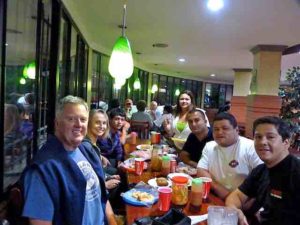
More El Salvadorian friends.
Pedro had not mentioned this but we would be joined by two of his race-driving friends, Carlos and Roberto. Carlos brought along his family. This included his wife, Mirna as well as their 17-year old son, Christian, their 15-year old son, Carlos and their eight year-old daughter Rocio.
We entered the restaurant. The place was packed with folks enjoying local El Salvadorian food, mainly pupusas. Pupusas (http://en.wikipedia.org/wiki/Pupusa) are a traditional Salvadorian dish served with a lightly fermented cabbage slaw with red chilies and vinegar. They are inexpensive. A single pupusa goes for about 75 cents.
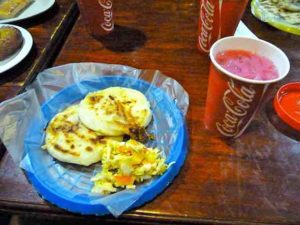
Pupusas for everyone and some Horchata too.
We ordered enough pupusas for our party of ten. We also had some “empanadas” an El Salvadorian dessert along with lots of “Horchata” a “red” or “brown” drink that quenched everyone’s thirst. This is an “order at the counter and pick up your food at the counter” operation. When we returned to our table with the food, there was a special gift waiting for Carol and me.

Pedro and his friends had two t-shirts from the local car club sitting on the table for us. What a nice gift. Then we all sat down to get to know each other and eat some pupusas.
One of Pedro’s friends, Roberto owns an ice cream factory. He doesn’t speak much English but we did learn he supplies the local vendors’ ice cream carts with ice cream. Chocolate is the best seller. Roberto will be driving the #05 car in tomorrow’s race.
Another race driver at our table was Juan Carlos. Carlos and his family lived in the United States for one and one-half years beginning in 2006. Actually, they lived in Tustin, California an Orange County suburb just 25 miles up the road from San Clemente.
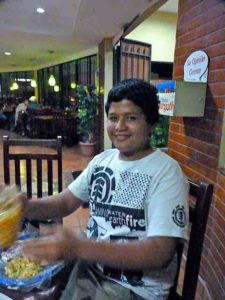
Carlos’ doesn’t speak much English either. Whenever I said something to him in English or he wanted to have his words translated into English he looked over to his 15-year-old son for help. All of Carlos and Mirna’s three kids were smiling, interesting and well-behaved children. They seemed comfortable around adults. That’s a major plus for young people. They will do well in life.
Why?
I got lots of questions about my trackchasing. “Have you ever raced? How many tracks have you been too? What does it take to count a track? What kinds of tracks are there?” They had lots of questions and I enjoyed telling them about my hobby. They were enthralled to hear about those “Dreaded East Coast Trackchasers”. They didn’t like ‘em either.
I went out of my way to tell them that, for me, trackchasing is not that much about racing! It’s about meeting new people, seeing new and unusual things and traveling to faraway places that I would never have visited if it weren’t for trackchasing.
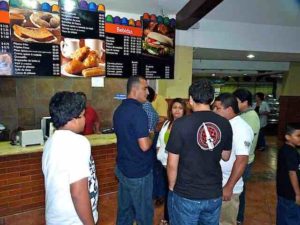
Dining with people is the best way (other than golf) to get to know folks.
Carol and I had a wonderful time breaking bread (pupusas) with these folks. I think they liked us too. Carlos (the son) and I practiced our “El Salvadorian” handshake. It’s pretty cool. Now I’m working with Carol on this “bro” handshake.
All too soon we were heading out of the restaurant. We had been in El Salvador for about ten hours. During that time we had met ten new friends. Those are the kinds of trackchasing numbers I like to rack up.
Tomorrow will be a historic day in the world of trackchasing.
Tomorrow is a historic day in trackchasing for me. If all goes well and I don’t wreck the rental car trying to get to the track I will see my 45th lifetime trackchasing country. Adding El Salvador will move me into the lead in this all-important category. Additionally, Carol will be her 25th lifetime country. By the way, no trackchaser has ever ventured down here to see a race. It’s always special to see racing in a country where no one had gone before. Yes, Tomorrow will indeed by a historic day in trackchasing. I can’t wait.
To be continued………………….
Thanks for reading about my trackchasing,
Randy Lewis
World’s #1 Trackchaser
El Salvadorian saying: Dip the pitcher into the water enough and it finally breaks.
EL SALVADOR – FAST FACTS*

EL SALVADOR!
El Salvador is the smallest and also the most densely populated country in Central America. It borders the Pacific Ocean between Guatemala and Honduras. It lies on the Gulf of Fonseca, as do Honduras and Nicaragua further south.
It has a population of approximately 6.1 million people, as of 2009. The capital city of San Salvador is the largest city of the republic. The colón was the currency of El Salvador between 1892 and 2001, when El Salvador adopted the U.S. Dollar. The colón continues to be legal tender.
Recent History
Civil War (1980 to 1992)
The Salvadoran Civil War was predominantly fought between the government of El Salvador and a coalition of four leftist groups and one communist group known as the Farabundo Martí National Liberation Front (FMLN).
The Salvadoran Civil war was fought in the context of the global Cold War, with Cuba and the USSR backing the Marxist-Leninist rebels and the United States backing the right wing military Salvadoran government.
On January 16, 1992 the government of El Salvador represented by president Alfredo Cristiani and the guerrilla …… signed the Peace Agreements ending a 12-year civil war in the Chapultepec Castle in Mexico. The Peace Agreements included reduction of the Army, the dissolution of the National Police, Treasury Police and National Guard. The dissolution of the Civilian Defense, a paramilitary group.
End of the 20th century
From 1989 until 2004, Salvadorans favored Nationalist Republican Alliance (ARENA) party, voting ARENA presidents in every election. Economic reforms since the early 1990s have brought major benefits in terms of improved social conditions, diversification of its export sector, and access to international financial markets at investment grade level, while crime remains a major problem for the investment climate.
Geography
El Salvador is located in Central America. It has a total area of 8,123 square miles (21,040 km²) (about the size of Massachusetts or Wales). It is the smallest country in continental America and is affectionately called the “Tom Thumb of the Americas”.
El Salvador shares borders with Guatemala and Honduras. It is the only Central American country that does not have a Caribbean coastline. The highest point in the country is Cerro El Pital at 8,957 feet (2,730 m), which shares a border with Honduras.
Climate
El Salvador has a tropical climate with pronounced wet and dry seasons. Temperatures vary primarily with elevation and show little seasonal change. The Pacific lowlands are uniformly hot; the central plateau and mountain areas are more moderate. The rainy season extends from May to October. Almost all the annual rainfall occurs during this time, and yearly totals, particularly on southern-facing mountain slopes, can be as high as 85.4 in.
From November through April, the northeast trade winds control weather patterns. During these months, air flowing from the Caribbean has lost most of the precipitation while passing over the mountains in Honduras. By the time this air reaches El Salvador, it is dry, hot, and hazy.
Natural disasters
El Salvador lies along the Pacific Ring of Fire, and is thus subject to significant tectonic activity, including frequent earthquakes and volcanic activity. Recent examples include the earthquake on January 13, 2001, that measured 7.7 on the Richter scale and caused a landslide that killed more than eight hundred people; and another earthquake only a month after the first one, February 13, 2001, killing 255 people and damaging about 20% of the nation’s housing.
The San Salvador area has been hit by earthquakes in 1576, 1659, 1798, 1839, 1854, 1873, 1880, 1917, 1919, 1965, 1986, 2001 and 2005.
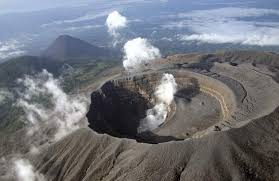
El Salvador’s most recent destructive volcanic eruption took place on October 1, 2005, when the Santa Ana Volcano spewed up a cloud of ash, hot mud and rocks, which fell on nearby villages and caused two deaths.
El Salvador’s position on the Pacific Ocean also makes it subject to severe weather conditions, including heavy rainstorms and severe droughts, both of which may be made more extreme by the El Niño and La Niña effects. In the summer of 2001, a severe drought destroyed 80% of the country’s crops, causing famine in the countryside. On October 4, 2005, severe rains resulted in dangerous flooding and landslides, which caused a minimum of fifty deaths. El Salvador’s location in Central America also makes it vulnerable to hurricanes coming off the Caribbean, however this risk is much less than for other Central American countries.
Economy
According to the IMF and CIA World Factbook, El Salvador has the third largest economy in the region (behind Costa Rica and Panama) when comparing nominal Gross Domestic Product and purchasing power GDP. El Salvador’s GDP per capita stands at US$4,365.
Most of El Salvador’s economy has been hampered by natural disasters such as earthquakes and hurricanes, but El Salvador currently has a steadily growing economy.
In December 1999, net international reserves equaled US$1.8 billion or roughly five months of imports. Having this hard currency buffer to work with, the Salvadoran government undertook a monetary integration plan beginning January 1, 2001 by which the U.S. dollar became legal tender alongside the Salvadoran colón and all formal accounting was done in U.S. dollars.
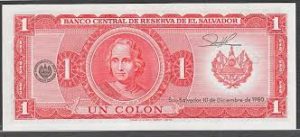
In 2004, the colón stopped circulating and is now never used in the country for any type of transaction. A challenge in El Salvador has been developing new growth sectors for a more diversified economy. In the past the country produced gold and silver. As many other former colonies, for many years El Salvador was considered a mono-export economy (an economy that depended heavily on one type of export). During colonial times, the Spanish decided that El Salvador would produce and export indigo, but after the invention of synthetic dyes in the 19th century, Salvadoran authorities and the newly created modern state turned to coffee as the main export.
El Salvador signed the Central American Free Trade Agreement (CAFTA) — negotiated by the five countries of Central America and the Dominican Republic — with the United States in 2004. CAFTA requires that the Salvadoran government adopt policies that foster free trade.
The government has focused on improving the collection of its current revenues with a focus on indirect taxes. A 10% value-added tax (IVA in Spanish), implemented in September 1992, was raised to 13% in July 1995.
Inflation has been steady and among the lowest in the region. Since 1997 inflation has averaged 3%, with recent years increasing to nearly 5%.
Remittances from Salvadorans living and working in the United States, sent to family in El Salvador, are a major source of foreign income and offset the substantial trade deficit of $4.12 billion. Remittances have increased steadily in the last decade and reached an all-time high of $3.32 billion in 2006 (an increase of 17% over the previous year), approximately 16.2% of gross domestic product(GDP).
Remittances have had positive and negative effects on El Salvador. In 2005 the number of people living in extreme poverty in El Salvador was 20%, according to a United Nations Development Program report, without remittances the number of Salvadorans living in extreme poverty would rise to 37%. While Salvadoran education levels have gone up, wage expectations have risen faster than either skills or productivity. For example, some Salvadorans are no longer willing to take jobs that pay them less than what they receive monthly from family members abroad. This has led to an influx of Hondurans and Nicaraguans who are willing to work for the prevailing wage. Also, the local propensity for consumption over investment has increased. Money from remittances have also increased prices for certain commodities such as real estate. Many Salvadorans abroad earning much higher wages can afford higher prices for houses in El Salvador than local Salvadorans and thus push up the prices that all Salvadorans must pay.
Demographics
El Salvador has lacked authoritative demographic data for many years because between 1992 and 2007, a national census had not been undertaken. Prior to the 2009 census, patterns in population growth led many officials (including within the Salvadoran government) to estimate the country’s population size at between 7.1 and 7.2 million people. Ninety percent of Salvadorans are mestizo (mixed Native American and European origin). Nine percent report their race as being white; this population is mostly of Spanish descent, including some of French, German, Swiss, English, Irish and Italian descent. El Salvador is 1% indigenous, mostly Pipil, Lenca and Kakawira (Cacaopera). Very few Native Americans have retained their native customs, traditions, or languages, especially in the wake of the deliberate 1932 massacres in which the Salvadoran military murdered somewhere between 20,000 and 30,000 peasants.
El Salvador is the only Central American country that has no visible African population because of its lack of an Atlantic coastline and attendant access to the slave trade which occurred along the east coast of the continent. In addition, General Maximiliano Hernandez Martinez instituted race laws in 1930 that prohibited blacks from entering the country, and it was not until the 1980s that this law was removed.
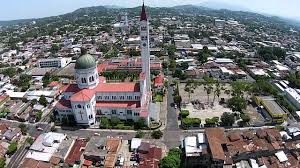
The capital city of San Salvador has about 2.1 million people; an estimated 42% of El Salvador’s population live in rural areas. Urbanization expanded at a phenomenal rate in El Salvador since the 1960s, driving millions to the cities and creating growth problems for cities around the country.
In the first half of 2007 La Policía Nacional Civil of El Salvador statistics showed lower numbers in homicide and extortions as well as robbery and theft of vehicles. In 2007 homicides in El Salvador had reduced 22%, extortions reduced 7%, and robbery and theft of vehicles had gone down 18%, all in comparison with the same period in 2006. However in 2009, there has been an increase in homicides and extortions of about 30 % more than in 2008 according to some statistics.
As of 2004, there were approximately 3.2 million Salvadorans living outside El Salvador, with the U.S. traditionally being the destination of choice for Salvadorans looking for greater economic opportunity. The majority of expatriates emigrated during the civil war of the 1980s for political reasons and later because of adverse economic and social conditions.
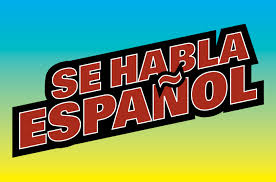
Language
Spanish is the official language and is spoken by virtually all inhabitants English is also spoken by some throughout the republic. German and French are also taught as a secondary language. English has been taught by the British in El Salvador for several decades-at least 50+years. Japanese is also spoken. There has been a small Japanese community in El Salvador since World War II.
Religion
According to a survey in 2008, 52.6% of El Salvador’s residents are Catholic, and 27.9% are Protestant. Anglican, Presbyterian, Methodist, and Seventh-day Adventist churches are all growing, as are Pentecostals and Mormons.
Health
For the period 2005-2010 El Salvador has the third lowest birth rate in Central America, 22.8 per 1,000. However, it has the highest death rate in Central America during the same period, 5.9 per 1,000. According to the most recent United Nations survey, life expectancy for men was 68 years and 74 years for women.
Crime
In the past years El Salvador has experienced high crime rates including gang-related crimes and juvenile delinquency. Some say that this was a result of the deportation of thousands of Salvadorans from the U.S, the majority of whom were members of MS13 (Mara Salvatrucha), in the mid-90s. The gangs in which Salvadorans had been involved in the United States began to show up in El Salvador.
Today El Salvador experiences some of the highest murder rates in the world, it is also considered an epicenter of the gang crisis, along with Guatemala and Honduras. In response to this, the government has set up countless programs to try to guide the youth away from gang membership, but so far its efforts have not produced any quick results. In 2004, the rate of intentional homicides per 100,000 citizens was 41, with 60% of the homicides committed were gang-related. El Salvador recorded a total of 552 murders in January and February 2005 alone. Homicides are among the highest with respect to the overall crime rate. Intentional homicides reported in 2006 reached up to 3,928 from 3,778 in 2005, and a rate of 55 violent deaths per every 100,000 people.
Despite the lower numbers of homicides in the first half of 2007, El Salvador continues to have the highest homicide rate in Central America and one of the highest in Latin America.
Culture
The Catholic Church plays an important role in the Salvadoran culture. Archbishop Oscar Romero is a national hero for his role in speaking out against human rights violations that were occurring in the lead up to the Salvadoran Civil War.
Painting, ceramics and textile goods are the main manual artistic expressions.
Tourism
The only airport serving international flights in the country is Comalapa International Airport. This airport is located about 25 mils southeast of San Salvador. The airport is commonly known as Comalapa International or El Salvador International.
El Salvador’s tourism industry has grown dynamically over recent years as the Salvadoran government focuses on developing this sector. Last year tourism accounted for 4.6% of GDP; only 10 years ago, it accounted for 0.4%.
Most North American and European tourists are seeking out El Salvador’s beaches and nightlife. Besides these two choices, El Salvador’s tourism landscape is slightly different than those of other Central American countries. Because of its geographical size and urbanization, there aren’t many nature-themed tourist destination such as ecotours or archaeological monuments. Surfing, however, is a natural tourist sector that is gaining popularity in recent years as more surfers visit many beaches in the coast of La Libertad and the east side of the country, finding surfing spots that are not yet overcrowded. Also, the use of the United States dollar as Salvadoran currency and direct flights of 4–6 hours from most cities in the United States are important things to note for first-time travelers from the United States. Urbanization and Americanization of Salvadoran culture has also led to something else that first time tourists might be surprised to see: the abundance of American-style malls, stores, and restaurants in the three main urban areas, especially greater San Salvador.
Tourists continue to be drawn by El Salvador’s turbulent past. Some of the latest tourist attractions in the former war-torn El Salvador are gun fragments, pictures, combat plans, and mountain hideouts. Since 1992, residents in economically depressed areas are trying to profit from these remains. The mountain town of Perquin was considered the “guerrilla capital.” Today it is home to the “Museum of the Revolution,” featuring cannons, uniforms, pieces of soviet weaponry, and other weapons of war.

Cuisine
One of the Salvadorian notable dishes is the pupusa. El Salvador pupusas are based on tortillas which are different in size and shape to Mexican tortillas. El Salvador tortillas are smaller than Mexican ones and are not as thin. Pupusas are a thick hand-made corn tortilla (made using masa de maíz or masa de arroz, a maize or rice flour dough used in Latin American cuisine) stuffed with one or more of the following: cheese (usually a soft Salvadoran cheese, a popular example is Quesillo con loroco, or mozzarella), chicharrón, and refried beans. Some adventurous restaurants even offer pupusas stuffed with shrimp or spinach. Pupusa comes from the pipil-nahuatl word, pupushahua. The pupusa’s exact origins are debated, although its presence in El Salvador is known to predate the arrival of Spaniards.
Two other typical Salvadoran dishes are yuca frita and panes rellenos. Yuca frita, which is deep fried cassava root served with curtido (a pickled cabbage, onion and carrot topping) and pork rinds with pescaditas (fried baby sardines). The Yuca is sometimes served boiled instead of fried. Panes con Pavo (turkey sandwiches) are warm turkey submarines. The turkey is marinated and then roasted with Pipil spices and hand pulled. This sandwich is traditionally served with turkey, tomato, and watercress along with cucumber, onion, lettuce, mayonnaise, and mustard.
One of the most noticeable breakfast plates in El Salvador is fried plantain, usually accompanied with cream and cheese. This is one of El Salvador’s typical breakfasts, common in Salvadorian restaurants and homes extending across the United States.
Another drink that Salvadorians enjoy is Horchata. Horchata is most commonly made of the Morro seed, ground into a powder and added to milk or water, and sugar. Horchata is drunk year round and can be drunk anytime of day. It mostly is accompanied by a plate of pupusas or fried yucca.
* Much of this info comes from my research at Wikipedia.
Official end of this RLR – Randy Lewis Racing Trackchaser Report
DAYS 4, 5 & 6 “ONE GREAT INTERNATIONAL TRACKCHASING WEEKEND” TRACKCHASING TOUR (part 2 of 2)

EL SALVADOR!
Greetings from San Salvador, El Salvador
THE COUNTRY LIST
#45!!
RLR – Randy Lewis Racing Lifetime Trackchasing Countries
# 1 – UNITED STATES OF AMERICA – Peoria Speedway (Mt. Hawley, oval) – Track #1, Peoria, Illinois – circa 1954 (age 5)
# 2 – CANADA – Cayuga Speedway (oval) – Track #174, Nelles Corner, Ontario, Canada – July 31, 1988 (Dick Trickle winner)
# 3 – AUSTRALIA – Parramatta City Raceway (oval) – Track #180, Granville, New South Wales, Australia – November 17, 1989 (accompanied by Carol)
# 4 – UNITED KINGDOM – Northhampton International Raceway (oval) – Track #378, Northhampton – June 26, 1999 (accompanied by Carol, Kristy, Jim)
# 5 – NETHERLANDS – Driesum Racetrack (oval) – Track #839, Driesum – May 5, 2005 (accompanied by Roland Vanden Eynde)
# 6 – BELGIUM – Bellekouter oval (oval) – Track #841, Affligem – May 8, 2005 (accompanied by Roland Vanden Eynde)
# 7 – FRANCE – Circuit de Croix en Ternois (road course) – Track #843, Saint-Pol sur-Ternoise – May 8, 2005 (accompanied by Roland Vanden Eynde – 2nd new country in one day!)
# 8 – GERMANY – Nurburgring (road course) – Track #844, Nurburg – May 13, 2005 (accompanied by Carol, Roland Vanden Eynde)
# 9 – NEW ZEALAND – Western Springs Speedway (oval) – Track #1,134, Western Springs – December 26, 2006 (accompanied by Carol)
# 10 – MEXICO – Triovalo Bernardo Obregon (oval) – Track #1,281, Tiajamulco de Zuniga, Jalisco – October 14, 2007 (accompanied by Carol, J.J., Roger Ward)
# 11 – BARBADOS – Bushy Park Racing Circuit (road course) – Track #1,296, Bushy Park – December 9, 2007
# 12 – THAILAND – Bira Circuit (road course) – Track #1,300, Pattaya – January 19, 2008
# 13 – SOUTH AFRICA – Durban Grand Prix (road course) – Track #1,315, Durban, KwaZulu-Natal – February 24, 2008 (accompanied by J.J. and Will Van Horne)
# 14 – JAMAICA – Dover Raceway (road course) – Track #1,322, Brown’s Town St. Ann – March 24, 2008
# 15 – SWEDEN – Sturup Raceway (road course) – Track #1,335, Malmo – May 10, 2008 (accompanied by Carol)
# 16 – DENMARK – Ring Djursland (road course) – Track #1,336, Tirstrup – May 11, 2008 (accompanied by Carol)
# 17 – CZECH REPUBLIC – Automotodrome BRNO (road course) – Track #1,381, Brno – September 13, 2008
# 18 – AUSTRIA – Lambrechten Stock Car Track (road course) – Track #1,382, Lambrechten – September 14, 2008
# 19 – IRELAND – Tipperary International Raceway (oval) – Track #1,388, Rosegreen – October 26, 2008 (Carol and I visited this track earlier in the year)
# 20 – GUYANA – South Dakota Circuit (road course) – Track #1,390, Timehri – November 2, 2008 (accompanied by Carol)
# 21 – CHINA – The Guia Circuit (road course) – Track #1,392, Macau – November 16, 2008 (accompanied by Carol)
# 22 – COSTA RICA – Autodromo La Guacima (road course) – Track #1,398, La Guacima – November 30, 2008
# 23 – ANDORRA – Grandvalira Circuit (road course) – Track #1,404, Port d’Envalira, Andorra – January 17, 2009
# 24 – ARGENTINA – Circuito Efren Chemolli (oval) – Track #1,406, Buenos Aires, Argentina – January 31, 2009 (shared with Jerry Fisher)
# 25 – QATAR – Losail International Circuit (road course) – Track #1,408, Doha, Qatar – February 13, 2009
# 26 – BAHRAIN – Bahrain International Circuit (road course) – Track #1,410, Sakhir, Bahrain – February 27, 2009 (accompanied by Carol)
# 27 – UNITED ARAB EMIRATES – Dubai Autodrome (road course) – Track #1,411, Dubai, United Arab Emirates – February 28, 2009 (accompanied by Carol)
# 28 – COLOMBIA – Autodromo de Tocancipa (road course) – Track #1,415, Tocancipa, Colombia – March 22, 2009
# 29 – SPAIN – Motorland Aragon (road course) – Track #1,416, Alcaniz, Spain – March 28, 2009
# 30 – PORTUGAL – Circuto de Murca (road course) – Track #1,417, Murca, Portugal – March 29, 2009
# 31 – ICELAND – Kapelluhraum (road course) – Track #1,420, Hafnafjorour, Iceland – April 25, 2009 (shared with Will White)
# 32 – HUNGARY – Hungaroring (road course) – Track #1,426, Mogyorod, Hungary – May 8, 2009 (accompanied by Carol)
# 33 – SWITZERLAND – Hock Ybrig (road course) – Track #1,427, Hoch Ybrig, Switzerland – May 9, 2009 (accompanied by Carol)
# 34 – ITALY – Vighizzolo d’Este Stock Car Track (road course) – Track #1,428, Vighizzolo d’Este, Italy – May 10, 2009 (accompanied by Carol)
# 35 – DOMINICAN REPUBLIC – Autodromo Mobil 1 (road course) – Track #1,515, Santo Domingo, Dominican Republic – December 6, 2009 (accompanied by Carol)
# 36 – MALTA – Ta’Qali Race Track (road course) – Track #1,521, Ta’Qali, Malta – February 7, 2010 (accompanied by Carol)
# 37 – FINLAND – Lake Pidisjarvi Ice Track (road course) – Track #1,524, Nivala, Finland – February 20, 2010
# 38 – JAPAN – Suzuka Circuit (road course) – Track #1,530, Suzuka, Japan – March 21, 2010
# 39 – CHILE – Autodromo de Interlomas (road course) – Track #1,531, Temuco, Chile – April 18, 2010
# 40 – MOROCCO – Circuit de Marrakesh (road course) – Track #1,535, Marrakesh, Morocco – May 1, 2010 (accompanied by Carol)
# 41 – BRAZIL – Circuit de Caruaru – Aryton Senna (road course) – Track #1,540, Caruaru, Brazil – May 16, 2010 (accompanied by Carol, Jerry Fisher and Katia Maria Spencer)
# 42 – ESTONIA – Laitse Rally Park (road course) – Track #1,571, Laitse, Estonia – July 24, 2010 (accompanied by Carol)
# 43 – LATVIA – Bikernieki (road course) – Track #1,572, Riga, Latvia – July 25, 2010 (accompanied by Carol)
# 44 – GUATEMALA – Autodromo Pedro Cofino (road course) – Track #1,580, Alotenango, Guatemala – August 15, 2010
# 45 – EL SALVADOR – El Jabali (road course) – Track #1,582, Quezaltepeque, El Salvador – August 22, 2010 (accompanied by Carol)
The ‘International Big 5’ standings.
During the last 35 months, I have added 36 trackchasing countries to my list. That’s an average of just over one new country every month for nearly three years.
- Randy Lewis, San Clemente, California USA – 45
- Roland Vanden Eynde, Vilvoorde, Belgium – 44
- Carol Lewis, San Clemente, California USA – 25
- Will White, Quakertown, Pennsylvania USA – 23
- Chris Economaki, Charlotte, North Carolina USA – 19
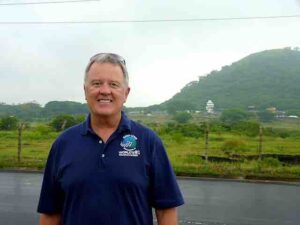
TRACKCHASING COUNTRY LEADERSHIP
Trackchasing on an international basis is just plain fun. There is so much to see and do in this world of ours. El Salvador is a unique trackchasing country. Why is that? Up until today none of the trackchasers had ever seen any racing here. Now Carol and I can lay claim to being the first trackchasers ever to see the dropping of a green flag in El Salvador.
El Salvador is special in another trackchasing regard. It will be known as the location where I grabbed the international country trackchasing lead. Who knows how long I can hold onto that title. I guess you could say that in the “modern era” of trackchasing Roland Vanden Eynde of Vilvoorde, Belgium has been in first place since day one.
Who is one to believe?
Roland has long maintained that he never planned to see more trackchasing countries than anyone else. He is not alone in claims like this. Many trackchasers, when they lose a trackchasing leadership position, immediately back peddle into this posture and claim this isn’t a competition. Then they go out and try to beat your brains out by adding tracks in the category they specialize in. I’ve come to expect that.

What would YOU think?
While Carol and I were eating pupusas and being toasted by our El Salvadorian friends on this monumental 45th trackchasing country achievement, what was Roland doing? He was attempting to see HIS 45th trackchasing country on the very same day I was!! Had he been successful he would have been the first to reach 45 countries by a few hours. As it turned out, he was unsuccessful in this attempted double-cross. Whew!
Roland pens a “Trackchaser Report” about his travels. Since the distribution is limited, I wanted to share with you his attempt at country #45. Click on this link if you wish to view it:
http://sports.groups.yahoo.com/group/TrackChasers/message/15178

Wouldn’t a sincere ‘Good job, mate’ approach have been better?
You’re always hearing me state that “trackchasing is one competitive hobby”. Wow! It sure is. At this report was going to press, I received this “message of congratulations” that came “without a hint of jealousy” from Roland on my achievement. I want messages like this to get a broader distribution. NOW you can see the “competitive boat” I’m in. Click on this link if you would like to see it:
http://sports.groups.yahoo.com/group/TrackChasers/message/15203
These guys don’t know how competitive, notes like this make them look. It’s humorous. No, it’s downright hilarious. I’ve played competitive sports all my life. I’ve worked for one of the largest and most competitive companies in the world for 30 years. There was always an extreme focus to “win the next game” or “get the next promotion”. Never in my life has there been in a more competitive situation than the hobby of trackchasing.

Not a competition….really?
Roland, and others in trackchasing, frequently cries that the hobby is “not really a competition”. The rankings don’t mean anything. In Roland’s case, I don’t believe him. I can’t tell if he is just delusional or is intentionally lying. However, I will keep an eye on his trackchasing behavior. If he goes out and starts adding new countries to his list I will have to keep him on the list of trackchasers who “say one thing and immediately do another thing”.
Reverse Psychology?
Someone recently suggested that I might be using “reverse psychology” on Roland and others. The theory goes that I’m intentionally “egging” them on so they will go out of their way to provide competition for me. Otherwise, some suggest, I might lose interest in the hobby if there wasn’t a competitive fight to wage. That’s an interesting theory isn’t it. Hmmmm.

Comparing apples and oranges.
Some 75% of Roland’s trackchasing countries are on his home continent of Europe. Someone once said that seeing racing in nearly every country in Europe (Roland has seen racing in 33 European countries) is akin to seeing racing in all 50 American states. I would agree with that assertion. Either achievement is noteworthy.
The European Union began about 15 years ago and now includes 27 European “states”. Trackchasing in many of the more popular European trackchasing countries is about on par with trackchasing first in Illinois and then moving on over to Indiana. However the “Illinois-Indiana” comparison would likely be much more difficult if you had to drive through Chicago!
I’ve tried to spread my trackchasing as evenly as possible over the six continents, relative to the possibilities, that host automobile racing. Here are my results to date and my rank in ( ) for that continent.
Africa – 2 (2)
Asia – 6 (1)
Australia – 2 (1)
Europe – 21 (2)
North America – 9 (1)
South America – 5 (1)
There are 13 countries, that still exist or that are accessible to Americans that have hosted other trackchasers but not me. This list includes:
Tunisia
Malaysia
Croatia
Greece
Lithuania
Luxembourg
Monaco
Norway
Poland
Romania
Serbia
Slovakia
Slovenia
I just might have to visit one or more of the above countries to check out their racing. Heck, while I’m at it I might even try to ADD some countries to the 61 where trackchasers have already visited.
TODAY’S HEADLINES
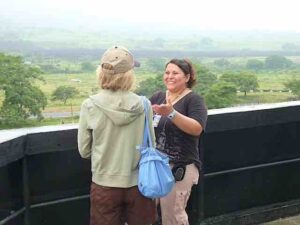
El Salvador will always be special because of the friends we met…………..details in “The Objective”.
We were in the best hands, the hands of the generous……………….more in “The Trip – Day 4 – Sunday”.

Today we would eat in a “hole in the wall” type local El Salvadorian restaurant……………….more in “The Trip – Day 4 – Saturday”.
THE OBJECTIVE, THE TRIP, THE PEOPLE…AND A WHOLE LOT MORE
The Objective
It’s really about the sights, sounds and culture.
One of the reasons, but not the main one, that I go trackchasing in foreign countries is to improve my “Total Countries” ranking. El Salvador will always be remembered as the country that put me over the top. Of course, I could very easily lose the #1 position in the future. Nevertheless, I will always remember El Salvador for this unique reason.
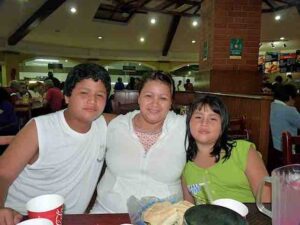
However, long after that battle is either won or lost, I will remember El Salvador for the people we met, dined with and laughed with. We were only in El Salvador for 48 hours. That’s time to eat six traditional meals (breakfast, lunch and dinner). We ate four of those six meals with our new El Salvadorian friends. That was the highlight of this trip by far.
The Trip
Editor’s note: Remember this trip started last Thursday when we ended up in Orlando, Florida even though we were headed to Buffalo, New York. The next night we trackchased in Greenville, South Carolina. On Saturday morning we headed to El Salvador. Therefore, El Salvador would be days 4-6 of this unusual trip.
Day 4 – Sunday
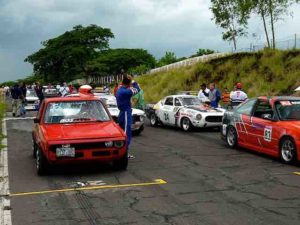
Today is race day.
Yes, today is “race day”. This is trackchasing country #45 for me. Three years ago I had seen racing in just nine countries. A lot of water has run underneath my airplane during the past 36 months. It’s been a blast. I hope to continue adding new countries to my list as often as possible.
We were in the best hands – the hands of the generous.
Our plan for this morning was to have our El Salvadorian host, Pedro Velado, meet us at our hotel. From there we would follow Pedro and his family over to the racetrack. Pedro was an insistent host. That’s really the best kind. He didn’t want anything to happen to Carol or me. His plan was to lead us anywhere we needed to go (almost) so that our short trip would be both safe and enjoyable.
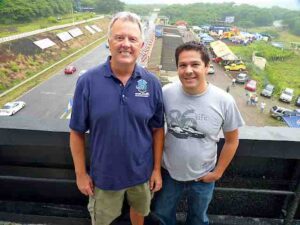
To be clear, I really don’t HAVE to have this kind of help to get around foreign countries. I’ve trackchased in 45 of them and traveled in well over fifty different countries. However, I understand the generosity of folks when international travelers come for a visit. They want the very best for their guests. Pedro ranks at the top of the list, along with several others, who have gone out of their way to make sure these international trackchasing visits are tops. We are indebted to Pedro, his family and his friends.
It was raining this morning. If I were in the states I would have been concerned. We “statesiders” are real wimps when it comes to rain and auto racing. They don’t mix very often in the United States. However, it is rare indeed for a foreign track to cancel because of rain. On a permanent asphalt road course, it is nearly unheard of.
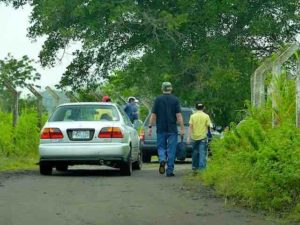
Using a GPS really takes the worry out of traveling in foreign places. When I say “foreign” I don’t mean foreign countries I mean travel to places where you don’t know how to get there. That could mean traveling across town or traveling across the world. Following another car to your destination is even easier than using GPS!
This really is a pretty big deal.
Carol says I’m “pretty big” in the foreign trackchasing world. For some reason, lucky for me, folks think it’s a pretty big deal for an American trackchaser to search out their track and then come thousands of miles to their races. I think it’s a big deal too; but then I’m probably biased.
Come on through – It pays to know people.
As we followed Pedro into the track, via a muddy dirt (actually volcanic soil) road, we passed by several checkpoints. These checkpoints all seemed to require cash from the drivers entering. However, for some “magical reason” after Pedro made a few comments in Spanish to the gatekeepers we were waved on through. Yes, I guess Carol is right.
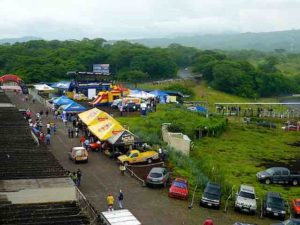
Despite the rain, today’s event would end up being crowded. However, we were given “V.I.P.” parking right next to the paddock area where last night’s dinner companions, Ricardo and Juan Carlos, had their racecars parked. During the process we were also given a complimentary race ticket. However, when we passed through a final checkpoint they took our tickets back. I would have loved to have had a souvenir ticket from my record-breaking 45th lifetime country.
Once we were parked, we said our hellos to all the folks we had dinner with last night. Young Carlos and I practiced our El Salvadorian handshake (Carol and I now work on that handshake daily!). Then Pedro led us up to the unusual “V.I.P. Press Box” tower. You really need to see the pictures on this building. I had never seen anything like it. The building had five levels to it. A winding staircase affair got us to the top.
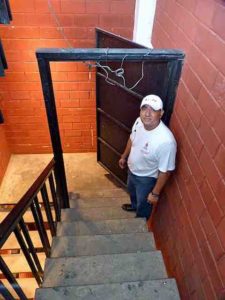
However, when we were just one story from the top, a very stern guard, backed by a huge steel door, stood in our way. Pedro soon came to the rescue. With a few choice words, the guard pulled back the steel door and we were allowed to the very top of this peculiar building. Folks, it “pays to know people”.
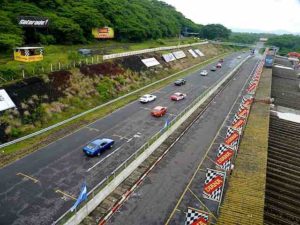
Once at the top of the press box, we could see forever. O.K., we really couldn’t see “forever”. It was misting rain and there was a significant cloud cover. However, we could see we were in the shadow of a huge volcano that in distant times had spewed lava down its hillside. It’s all “frozen” black lava rock now and reminded us of our visits to the Big Island of Hawaii.
For the next four hours Carol and I had “full run” of the place. We could go anywhere. That included the paddock and any grandstand at the place. I also spent some time on the racing surface as the cars staged for their next race.
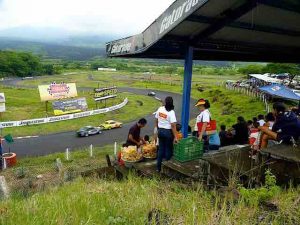
The racetrack.
The Autodromo El Jabali had a most interesting layout. There were some elevation changes and spectators could see the cars for about 90% of each lap. Only when the cars disappeared back into the “forest” were they out of sight.
It was fun seeing our new friends Juan Carlos and Ricardo race. They both finished at the front of the 24-car pack. I also very much enjoyed the motorcycle racing. I got some great shots of them “laying” their bikes down.
The concessions.
It’s the most fun to see what these international tracks offer as food concessions. Of course, there was complimentary food in the V.I.P. section of the scoring tower. However, we chose to eat from the various offerings made available to everyone.
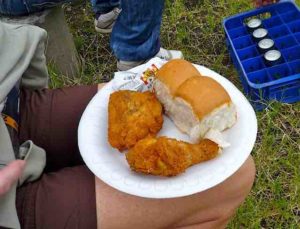
One vendor was selling some form of “salty snack” that he added hot sauce too at the time of purchase. Carol and I shared some fried chicken at the Nash’s chicken and pizza concession. This made us feel as if we were watching a NASCAR race back in the day. We fed our chicken bones to a lonely, but well-behaved dog that wandered the track. I’m still surprised that foreign tracks rarely offer diet soda among their choices.

What’s the real interest?
Today there were about six classes racing. I didn’t see any race programs and the announcer spoke exclusively in Spanish. That’s O.K. Some folks think I do this because of my interest in racing. If that were true how could anyone explain my going to more than 150 figure 8 tracks!
No, my trackchasing interest is NOT primarily the racing. This is especially true when I trackchase internationally. I’m not including Canada in the previous statement. I don’t consider Canada a foreign country. To me, they’re simply “Minnesota Lite”. If they want to refer to us as “Ontario Lite” I don’t mind that a bit. Of all the trackchasing countries I’ve visited the one that feel “least like” a foreign country is Canada. Of course, if you’re talking Quebec that’s a different story.
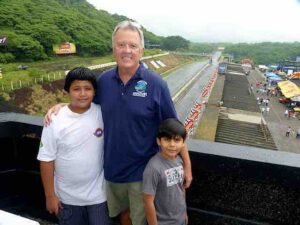
I come here to meet the people, eat the food and see the sights.
I go to these “foreign country” racetracks to meet the people. I love to see what they eat, how they act and what they look like. I guess I don’t have to fly so far to see this. I could simply drive up to Los Angeles and see just about any foreign culture the world has.
However, I can marvel at the concession items being sold, the types of toilets being used and the unusual racing procedures and tracks that I encounter. On occasion it might be better if the announcers spoke in a tongue I could understand. I guess if they did that it wouldn’t be much of a “foreign” experience.
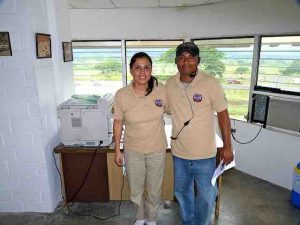
Access is the key baby.
It’s also priceless to have “access”. Several years ago, I began telling promoters and fans about my interest in trackchasing. I was the first to have a website that promoted my trackchasing results. I am probably the only trackchaser that tries to let nearly every track I visit know that I’m there.
Holding back the hobby?
In a way, I’m sort of like the Richard Petty of trackchasing. Petty was one of the first to notice that his sport could benefit from him being “accessible”. He signed autographs, did radio and TV interviews and simply promoted both himself and the sport. All the while many of his fellow competitors were wearing overalls, had lots of grease underneath their fingernails and couldn’t look a reporter in the eye. I’ll bet they were envious of Richard Petty doing those early interviews. Sometimes I think members of the trackchasing “founding group” have missed the opportunity to really promote the hobby of “Trackchasing”. See how well NASCAR has done when its participants took the time to work with the press? Look at how much interest I can generate when I travel to a new international track, or even many in the U.S. I feel that several trackchasers have either missed the boat or are holding back the development of our hobby.
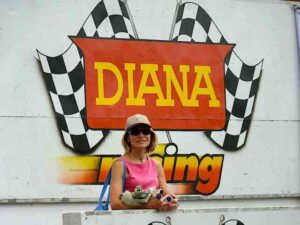
Nevertheless, it was a wonderful day of trackchasing for Carol and me. What a wonderful place for me to see racing in my 45th trackchasing country and for Carol to see racing in her 25th trackchasing country.
Please don’t miss the pictures!
I would implore you to view the pictures of what we saw today. I can only tell you so much in words. You can now see what I see in High Definition movies! I think any foreign country trackchasing adventure warrants a visit to www.randylewis.org to see photos from international tracks. Just click on the “Foreign Countries Visited” tab and you can entertain yourself all day.
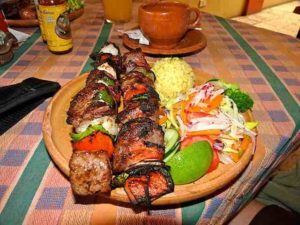
What’s a ‘hole in the wall’ restaurant?
After the races, we followed Pedro, Sophia and Juan-Pablo to a nearby native El Salvadorian restaurant. Pedro had asked me last night where I would like to eat after the races. I told him I wanted to eat in a “hole in the wall” restaurant. Pedro wasn’t familiar with this term. I explained it to him. I have long railed against trackchasers who travel to faraway places and then eat at McDonalds or Subway and the like. Yes, these places are “easy”. They can be found on nearly every street corner all around the world. What fun is this type of travel adventure if you never get out of your comfort zone?
Once Pedro knew what a “hole in the wall” place was, he decided on the El Jabali restaurant just five minutes or so from the racetrack. This place serves its patrons outdoors. Luckily the tables had some roofs over them since the rain had begun once again.
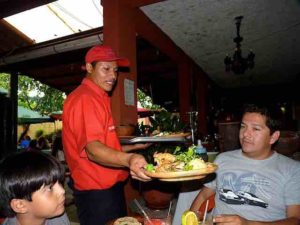
Bring on the Salvadorian food.
Pedro explained that I needed to have the local dish. He said, “It doesn’t get any more El Salvadorian” than this. This entrée was a soup with all kinds of vegetables and “other stuff” in it. On my own, I never would have ordered this dish. I was a little afraid to ask what the “other stuff” actually was.
Of course, I had to have a “Pupusa” for an appetizer. We had been introduced to them last night. I love ‘em. Last week in Guatemala I was re-introduced to the “smoothie”. Today I had a pineapple smoothie that was delicious. Carol went with a beef kabob of some sort. There was a massive amount of food with that entrée… and she ate it all. Juan-Pablo had rabbit. This was an international food fest of the nth degree.
Eat, talk. Eat, talk. Repeat.
We ate and talked. Then we talked and ate. All the while two live singers who kept the place jiving with Salvadorian music entertained us. We had eaten Nash’s fried chicken, a local favorite at the track. We had absolutely stuffed ourselves here at lunch. It was now about 3 p.m. I couldn’t eat another bite. I was looking forward to a nice nap back at the hotel.
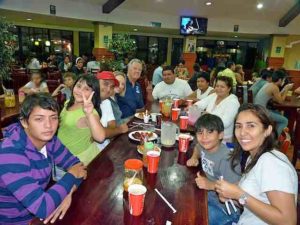
We’re going out for pupusas tonight, right?
As we walked out to our cars in the soggy dirt parking lot, I began to say my “trip goodbyes”. However, Pedro surprised us. “We’re going out for Pupusas tonight right?” Oh, my! Despite a bulging tummy and the need for some rest time, how could I pass up more Pupusas and the good company of Pedro and his family. “Yes, we’re on for Pupusas” was all I could say.
Postcards, then pupusas.
Carol was still on the lookout for more postcards. She had a distribution list of about 20 friends and family that get postcards from each trip we take. I wouldn’t be surprised if we spend a thousand dollars a year on postcards and international stamps!
Pedro recommended a modern shopping mall as a postcard source. We followed him back into San Salvador to a state of the art shopping mall. We’ve come to like new malls that we’ve seen during these visits. Except for my Apple computer training I never go into a mall at home.
We soon found our postcards. We also found some goodies for the “best darned grandbabies” we’ve ever had. From there we used our GPS to get us back to the hotel.
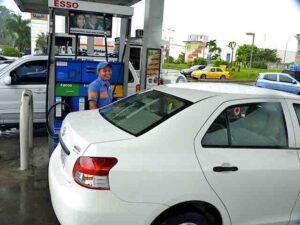
Our gas expense wasn’t much.
Along the way, we stopped for gas. Our itinerary took us from the airport to the hotel to the track to the hotel and back to the airport (tomorrow). Where we stopped, the gas station attendant pumped the gas. We needed less than three gallons to fill our tank. That came to just $9.15 U.S. Contrast that with a gas fill-up in Denmark some years ago that cost us $117 U.S.! When we can spend less than ten dollars on gas for an entire foreign country visit we consider that a major win.
We’ve been surprised by El Salvador. It seems to be more like the United States in many ways than any country we have visited (Canada excepted, of course). I’ve never seen more American brand names. These include all the fast food restaurants the U.S. has as well as Sherwin Williams, Home Depot, Shell, Texaco, Chili’s and the list goes on.
Who else uses the dollar as their currency.
I’ve never known any other country to use the American dollar as their currency. There might be a “cruise-ship” type Caribbean country but I can’t think of any. However they don’t speak our language. It was very rare, Pedro excepted, that we ran into anyone who was fluent in English. However, I know enough Spanish words and have gotten pretty good at “sign language” to keep from starving.
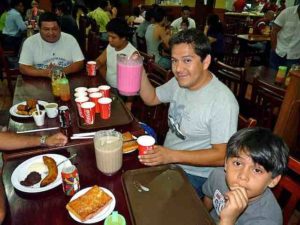
It’s pupusa time.
At just past 7:15 p.m. Pedro pulled his stick shift Honda Civic in front of our hotel towing Sophia and Pedro along. We were going to the same place we visited last night to eat pupusas. Pedro wanted us to make sure we tried the rice pupusas in addition to the corn pupusas that are the most prevalent.
When we arrived at the restaurant’s parking lot we found the same stern guard who was sporting a shotgun that looked big enough to blow a hole through the side of a tank. He wore fingerless gloves. He kept his right hand on the trigger and his left hand on the gun barrel. Last night Pedro had asked the guard if I could take his picture. I was afraid to ask. I could see the guard vigorously shake his head “no”. It sends shivers up my spine just writing about it!
As we were about ready to enter the restaurant who did we see? Ricardo and Juan Carlos’ entire family. That made eleven of us just like last night! It was fun then and it was fun tonight.
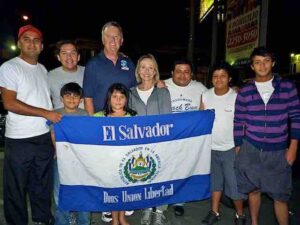
What a thoughtful gesture.
Last night Pedro and the group surprised Carol and I with souvenir t-shirts. Tonight they had another surprise for us. They presented us with an El Salvadorian flag!! Of course, the Salvadorian flag is a beautiful blue and white striped design with the country’s motto: “Dios, Union, Libertad” (God, Union, Liberty) inscribed. One of my best trackchasing gifts ever was the Colombian flag my good friends from South American gave me. Now I had two GREAT flags to adorn my trackchasing trophy room. I can’t thank Pedro and his friends and family for the reception they gave us. I hope they can come back to the U.S. (most have been there a few times or even lived there) so I can return the hospitality favor.
Following dinner Carol and I returned to the hotel with Pedro, Sophia and Juan-Pablo. It was getting late. We had eaten enough local food for an entire soccer team. We were only going to be in El Salvador for 48 hours. To some that might not seem like much time. However, I challenge anyone to see more things and meet more great people than we did. I don’t think it can be done!
Day 6 – Monday
Am I really cutting back?
We were only in El Salvador for 48 hours. It seemed like much longer. However, we had to get home. We’ve got an Angels game tomorrow night. In order to maintain a “balanced lifestyle” we’ve got to spend the right amount of time with each activity.
By the way, IF we get home tonight, I will have been some 105 nights on the road so far in 2010. Carol has a respectable total of 62 nights spent away from the sleepy little seaside village that we call home, San Clemente, California. I never mean to have that much travel it just turns out that way.

We slept late this morning at least for us. Then we enjoyed a buffet breakfast at our hotel. The Sheridan Presidente San Salvador Hotel has been wonderful. The inside of the place is five-star. It’s in a safe neighborhood although there isn’t much nearby to walk too.
Pedro had offered to leave work so he could guide us part way back to the airport. I told him that wasn’t necessary. He had already done so much for us I didn’t want to impose.
Take me to the airport, please.
With our Hertz Racing Toyota Yaris rental car all gassed up, we headed back to the Comalapa International airport. We had the airport’s listing in the “recently found” section of our GPS. There were a couple of tricky turns to deal with and then it was a straight shot to the airport. The overall distance was about 20 miles.
However, even with a GPS it’s not that hard to get lost. It’s especially troublesome when we approach a “fork in the road” and have to make a split second decision. The great thing about a GPS unit it that is “recalculates” the route even when I take the wrong road. It’s quite the machine.
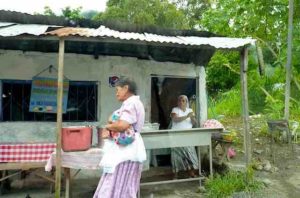
We benefit from our mistakes.
One of my two mistakes took us through a very poor small town on the outskirts of San Salvador. This would have been a poor place to have to stop. With one hand on the steering wheel, another on the five-speed gearshift and my other hand taking pictures right and left we motored along. Carol held the GPS for me to view.
Our plan was to take a flight from San Salvador to Atlanta, Georgia on our preferred airline. If we made it to Atlanta we would have two shots at getting a flight back to Los Angeles tonight. If we didn’t make those flights we would overnight in Atlanta and try for LAX again tomorrow.
Would anyone else do this the way we do?
Our proposed flight had no unsold seats left. We were #10 and #11 on the standby list. That meant that eleven paying passengers or standby fliers who had a better priority that we did had to miss the flight. We almost made it. We were just one seat from getting on this plane. Every one of the standbys that did make the flight got business class. However, we didn’t make it!

Nevertheless, I am trained to “move on” to plan “B” when plan “A” goes in the dumper. Plan “B” was to take an “associate sponsored” airline. In this case, that would be TACA Airlines, the major airline of Central America. TACA flies to about ten locations in the U.S.
In order to do this, we have to buy “paper” tickets. The “operative” word here is “paper”. In this case, getting a paper ticket means dealing with a human. Often the employees aren’t familiar with the ticketing process. Today it took me exactly ONE HOUR to get our paper tickets for a standby flight to Los Angeles.
Of course, on an airline like TACA we have ZERO priority. We’re behind everybody on the standby list! Actually if we got to Los Angeles tonight on a TACA flight, except for the added cost, we would be better off than being stranded in Atlanta on our preferred airline.
However, we missed getting on the TACA flight to Los Angeles. There were no extra seats for any wayward trackchasers. If you don’t know this about me, I NEVER give up until we are “mathematically eliminated”. Then I give up! Often times at this point I swear.
TACA had a flight leaving for San Francisco at the same time the LA flight was leaving. There might be a seat on that plane for us. However, we would have to go through another security line to get to that gate. We were in a mad rush to make that plane now. Nobody spoke much English but they knew what we wanted to do. Yes, we were rushing now.
At the San Salvador airport passengers must do the entire “security thing” i.e. remove your shoes, take laptops out of bags, remove all metal objects etc to get into the terminal. Today they took away the eight-foot rope I carry for my stretching exercises.
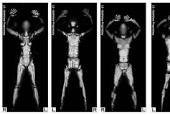
However AT THE GATE the “TSA” like people go through your bags with a fine toothcomb once again. It’s time consuming and somewhat nerve-racking when there is a race against the clock. Today’s TSA screener got her rubber glove caught in the zipper of my computer case! Another TSA agent had to come to her rescue.
Ingenuity wins out.
We made the five hour, twenty minute flight to San Francisco. That was a LONG flight in a middle seat. Once we cleared customs at SFO we had three flights that could get us to SoCal tonight. If we didn’t make any of those we would stay overnight in San Francisco. Of course, it would be too late (11 p.m. Eastern time) to get a greatly reduced price hotel from Priceline.com. I would deal with that later if I had too.
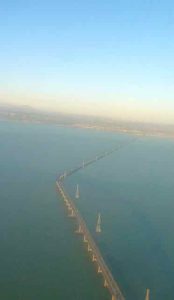
Not possible without the right tools.
Within seconds of our plane landing in San Francisco I was on my iPhone checking on flights to the Los Angeles area. We had several choices including the Los Angeles International Airport (LAX), Ontario (ONT), Burbank (BUR), San Diego (SAN), Long Beach (LGB) and Orange County (SNA). What I like in life is choice.
Orange County was the only airport that still had a plane leaving SFO this evening with lots of open seats. Of course, our car was parked some 40 miles away at LAX! Not to worry. It’s all part of the challenge. I would just get a one-way car rental. I would pickup the car at SNA and drop it at LAX. I would use one of my “free days” and it wouldn’t cost me a penny.
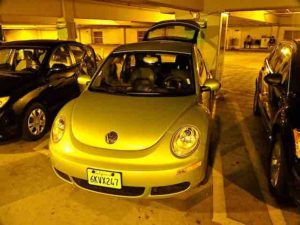
Sometimes the plan hits a snag.
However, National had other ideas. They didn’t have any “one-way” cars that would fit my plan. Not to worry. It’s all part of the challenge. I would simply get a round-trip car from Orange County. When we landed their we would pick up our rental car (a VW bug), drive it to LAX and pick up the Carol Lewis owned and Life if Virginia sponsored Lexus LS 430. Then we would drive BOTH cars back to SNA and drop off the rental car. Finally, we would motor the last 30 miles back to our cottage in the sleepy little seaside village of San Clemente. Unless you’re a professional I wouldn’t recommend this type of travel plan.
We hoped to complete this adventure by 1-2 a.m. I would like to tell you that we would sleep late tomorrow. However, Carol has “adult ADD”. She CAN’T sleep late. When we get home she’ll put a load of wash “in” and be up at 6 a.m. to make my breakfast (which I will be too full and tired to eat) and then be off to aerobics. Ah, for the energy of youth!
Day 7 – Tuesday
The piper must be paid!
We did arrive home in the wee hours of Tuesday morning. This had been another wonderful international trackchasing trip. I guess it will be up to my fellow competitors on whether and how much more international travel I do in 2010.
Thanks for reading about my trackchasing,
Randy Lewis
World’s #1 Ranked Trackchaser
El Salvadorian saying: Dip the pitcher in the water often enough and it finally breaks.
TRAVEL DETAILS
AIRPLANE
Los Angeles, CA (LAX) – Orlando, FL (MCO) – 2,210 miles
Overnight in Orlando
Orlando, FL (MCO) – Atlanta (ATL) – 404 miles
RENTAL CAR #1
Hartsfield-Jackson Atlanta International Airport – trip begins
Greenville, SC – 151 miles
Hartsfield-Jackson Atlanta International Airport – 308 miles – trip ends
AIRPLANE
Atlanta, GA (ATL) – Salvador, El Salvador (SAL) – 1,420 miles
RENTAL CAR #2
Comalapa (El Salvador) International Airport – trip begins
Quezaltepeque, El Salvador – 41 miles
Comalapa (El Salvador) International Airport – 77 miles – trip ends
AIRPLANE
San Salvador, El Salvador (SAL) – San Francisco, CA (SFO) – 2,640 miles
San Francisco, CA (SFO) – Los Angeles, CA (LAX) – 372 miles
Total Air miles – 7,046 (5 flights)
Total Rental Car miles – 385 (2 cars)
Total miles traveled on this trip – 7,431 miles
TRACK ADMISSION PRICES:
Greenville-Pickens Speedway – Greenville, South Carolina – $12
Autodromo El Jabali (Quezaltepeque) – Complimentary
Total racetrack admissions for the trip – $12
COMPARISONS
LIFETIME TRACKCHASER COMPARISONS
There are no trackchasers currently within 200 tracks of my lifetime total.
- Randy Lewis, San Clemente, California – 1,582
- Ed Esser, Madison, Wisconsin – 1,314
- Guy “The Kid” Smith, Effort, Pennsylvania – 1,294
Official end of the RLR – Randy Lewis Racing Trackchaser Report
El Salvador – Touring part 1
.
.
El Salvador – The Race part 2
.
.
El Salvador – Touring part 3
.
.
El Salvador auto racing – actual race footage


